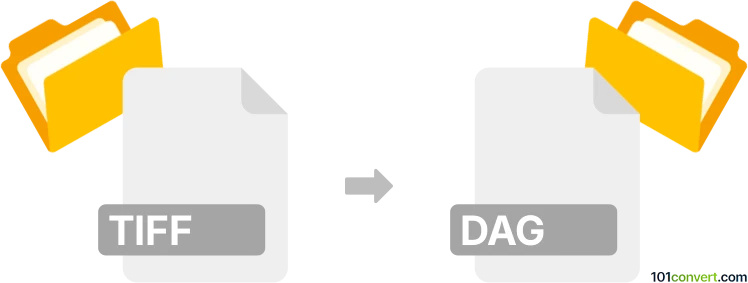Convert TIFF to DAG
How to convert TIFF images to DAG files using custom scripts or specialized workflow tools.

How to convert tiff to dag file
- Other formats
- No ratings yet.
101convert.com assistant bot
3h
Understanding TIFF and DAG file formats
TIFF (Tagged Image File Format) is a widely used raster image format known for its high quality and support for lossless compression. It is commonly used in photography, publishing, and scanning due to its ability to store detailed image data and metadata.
DAG files, on the other hand, are less common and their format can vary depending on the application. In many cases, a DAG file refers to a Directed Acyclic Graph data structure used in computational workflows, bioinformatics, or specialized software. DAG files are typically not image files, but rather represent relationships or workflows in a graph format.
How to convert TIFF to DAG
Since TIFF is an image format and DAG is usually a data structure or workflow file, direct conversion is not standard. However, if your workflow or software supports importing images as nodes or elements in a DAG, you may be able to use specialized tools or scripts to automate this process.
For example, in bioinformatics, some tools allow you to annotate images and export the relationships as a DAG file. Alternatively, if you are working with a custom application, you may need to write a script (in Python or another language) to convert image data into a DAG-compatible format.
Recommended software for TIFF to DAG conversion
- Custom Python scripts: For most cases, writing a Python script using libraries like Pillow (for TIFF) and networkx (for DAG creation) is the best approach.
- Bioinformatics tools: If you are working in genomics or similar fields, tools like Cytoscape or Snakemake may allow you to integrate images into DAG workflows.
- Workflow management software: Some platforms allow importing images as part of workflow nodes, which can then be exported as DAG files.
Step-by-step conversion using Python
- Install required libraries: pip install pillow networkx
- Load the TIFF image using Pillow.
- Define how the image data should be represented in the DAG (e.g., each pixel as a node, or regions as nodes).
- Create the DAG structure using networkx.
- Export the DAG to your desired file format (e.g., GraphML, GML, or a custom .dag file).
Summary
Direct conversion from TIFF to DAG is not typical due to their fundamentally different purposes. The best approach is to use custom scripts or specialized workflow tools that can interpret image data and generate a DAG structure as needed for your application.
Note: This tiff to dag conversion record is incomplete, must be verified, and may contain inaccuracies. Please vote below whether you found this information helpful or not.